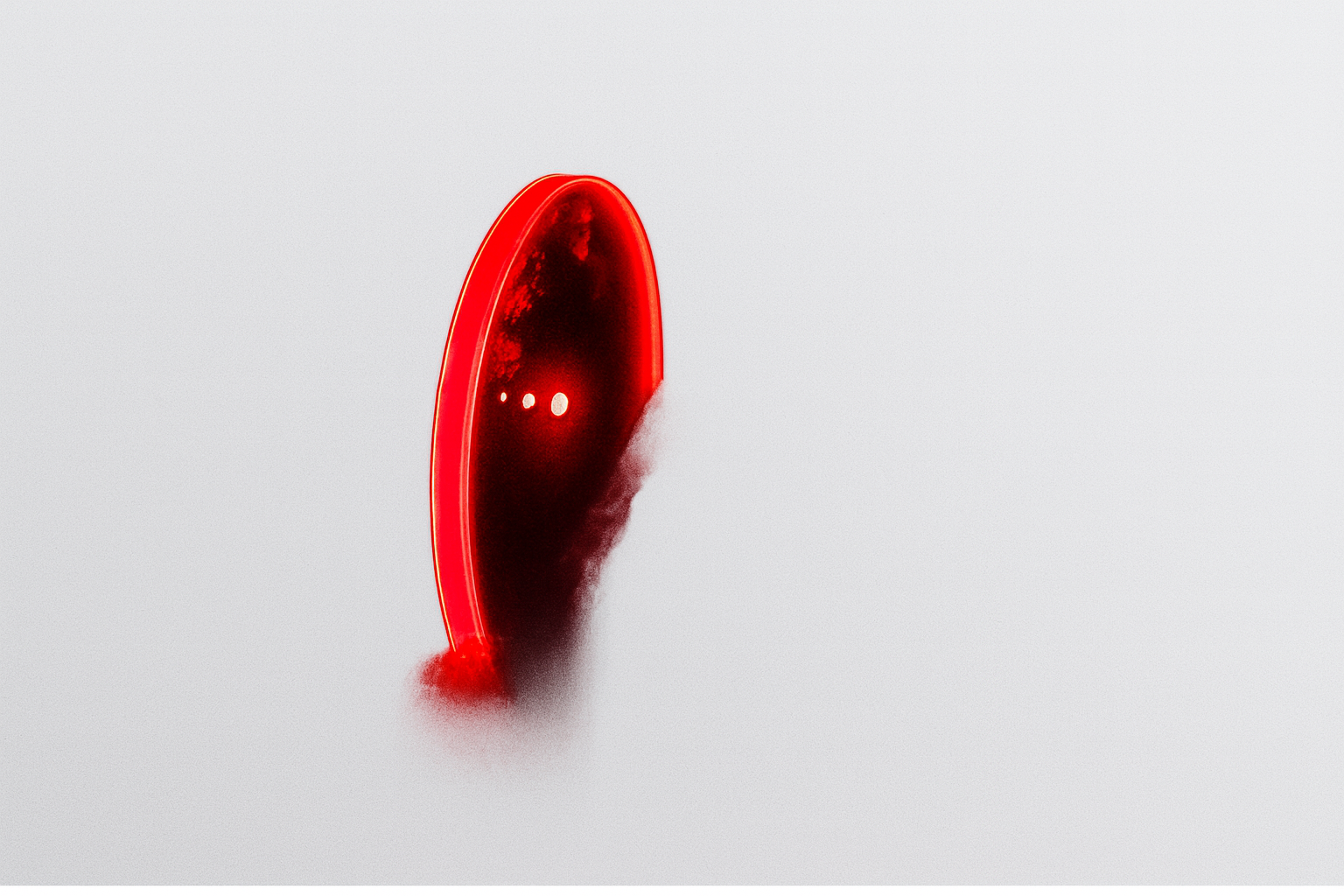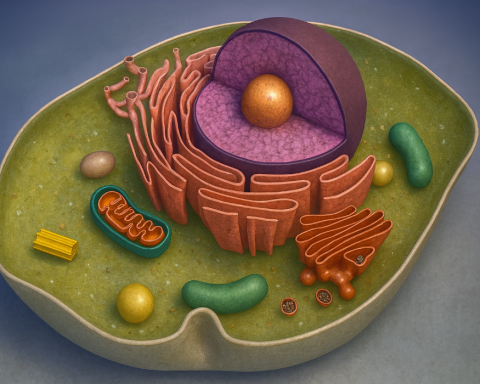- P3TTM is a triphenyl‑substituted triarylmethyl (TTM) organic radical—an open‑shell semiconductor whose key feature is a single unpaired electron in a SOMO (singly occupied molecular orbital). The triphenyl end groups are engineered to strengthen intermolecular coupling. PubMed
- Cambridge researchers observed “homojunction” charge separation in neat P3TTM films: photoexcitation creates cation–anion pairs between neighboring radicals that can be fully split by an electric field, yielding near‑unity charge collection in diode tests. Nature
- The mechanism is governed by Mott–Hubbard physics: the energy penalty for double occupancy (Hubbard U) is read directly from P3TTM’s redox potentials (−1.05 V reduction, +0.67 V oxidation, U ≈ 1.72 eV), enabling charge transfer within SOMO–SOMO levels rather than the usual HOMO–LUMO route. Nature
- Time‑resolved spectroscopy finds ultrafast charge generation (~ps⁻¹) and long‑lived charge‑transfer (CT) pairs (up to ~µs), with clear anion (~580 nm) and cation (~760 nm) signatures. Nature
- Magnetic‑field‑dependent photoluminescence (magnetoluminescence) confirms the spin‑selective nature of the CT process; effects grow at low temperatures and higher fields. Nature
- A proof‑of‑concept P3TTM device (ITO/PEDOT:PSS/P3TTM/C60/BCP/Al) under 395 nm excitation shows photocurrent saturation ~45 mA cm⁻² in reverse bias, indicating ≈100% charge‑collection quantum yield for the absorbed light. Nature
- Why this matters: conventional organic solar cells (OSCs) need donor–acceptor heterojunctions because excitons are tightly bound (typically ~0.3–1 eV); P3TTM points to single‑material OSCs that generate charges internally. ScienceDirect
- The result builds on a broader wave: homojunction OSCs have been explored before (e.g., α‑6T devices reaching EQE ~44%), but P3TTM is the first to leverage an open‑shell radical to drive bulk photogeneration. Nature
- Challenges remain (stability, spectrum coverage, scaling), but lessons from radical OLEDs (some achieving ~100% internal quantum efficiency) hint at robust device engineering paths. Nature
The future of photovoltaics through the lens of P3TTM
1) Why single‑material solar cells have been so hard in organics
In molecular semiconductors, light creates tightly bound excitons; without a strong built‑in energy offset, these excitons recombine instead of splitting into free electrons and holes. That’s why nearly all efficient OSCs rely on donor–acceptor heterojunctions—architectures deliberately engineered to separate charges at interfaces. Typical exciton binding energies in organics are ~0.3–1 eV, orders of magnitude above the few‑meV values in crystalline silicon. ScienceDirect
2) What is P3TTM—and why radicals change the rules
P3TTM is a triphenyl‑substituted TTM radical. Unlike closed‑shell molecules with paired electrons, radicals host an unpaired electron in a SOMO. By decorating the TTM core with phenyl groups, the Cambridge team created strong intermolecular contacts that let neighboring radicals communicate electronically in the solid state—crucial for collective behavior. PubMed
This material comes from a family that has already transformed radical OLEDs. Open‑shell emitters can harvest both singlet and triplet excitations, and recent TTM‑based devices have approached ~100% internal quantum efficiency—evidence that radicals can be engineered with precision and stability when the chemistry is right. Nature
3) The extraordinary quantum property: SOMO–SOMO charge separation driven by Hubbard U
In P3TTM, photoexcitation on one radical can hop an electron to a neighbor’s SOMO, instantly forming a radical cation + radical anion pair—without needing a donor/acceptor interface. The Hubbard U (the energetic cost of double occupancy of a SOMO) emerges naturally from electrochemistry: for P3TTM, the −1.05 V reduction and +0.67 V oxidation potentials imply U ≈ 1.72 eV (≈720 nm), matching a red emission band and placing the system in a Mott–Hubbard regime where electron–electron interaction dominates the photophysics. Nature
Spectroscopy and modeling show charge generation rates up to ~1 ps⁻¹ and CT lifetimes approaching microseconds, with distinct spectral fingerprints for anions (~580 nm) and cations (~760 nm). The CT pair forms between SOMO levels—a radical‑specific pathway distinct from traditional HOMO→LUMO charge transfer. Nature
A striking feature is magnetoluminescence: because the CT mechanism requires a singlet radical‑pair configuration, an applied magnetic field changes the singlet–triplet balance and modulates the emission, an effect that becomes stronger at low temperature and higher fields. This spin‑selective bottleneck is both a diagnostic and a potential control knob. Nature
4) Device‑level demonstration: near‑unity charge collection from a single material
To test whether these CT pairs can be pulled apart into free carriers, the team built simple diodes: ITO / PEDOT:PSS / P3TTM (≈80 nm) / C60 / BCP / Al. Under 395 nm illumination (≈160 mW cm⁻²), the P3TTM device saturates around 45 mA cm⁻² in reverse bias, yielding a charge‑collection quantum yield ≈100% for the absorbed photons—even without relying on a P3TTM/C60 heterojunction. That behavior contrasts sharply with control devices based on rubrene, where the donor–acceptor interface dominates. Nature
The University of Cambridge summarized the leap succinctly: P3TTM “achieved a remarkable close‑to‑unity charge collection efficiency” in a single‑component film—evidence that the material itself can do the work heterojunctions were previously required to do. phy.cam.ac.uk
Important nuance: near‑unity charge collection under reverse bias for a given wavelength/fluence is not the same as a record power‑conversion efficiency (PCE) under the solar spectrum. But it proves the central bottleneck—where do free carriers come from in a single organic material?—can be solved by radical physics. Nature
5) How P3TTM compares with earlier “homojunction” concepts
“Single‑material” or homojunction OSCs have been explored by engineering internal electrostatic offsets—e.g., α‑sexithiophene devices where differently oriented crystallites create ~0.4 eV internal steps, reaching EQE up to ~44%. P3TTM is different: its open‑shell nature allows SOMO–SOMO symmetry‑breaking charge transfer set by U, pointing to a more intrinsic path to charge generation. Nature
A recent review of single‑component OPVs also emphasizes how morphology, transport layers (e.g., CuSCN), and level alignment tune charge extraction in the absence of traditional donors/acceptors—design knobs that dovetail with radical materials. American Chemical Society Publications
6) Engineering playbook: what to tune next
- Electronic correlation (U) vs. exciton energy: P3TTM shows that when the doublet exciton energy exceeds U, CT formation is favorable. Synthetic chemistry can shift redox potentials and excited‑state energies to optimize this inequality. Nature
- Intermolecular coupling: the triphenyl end groups are already used to tighten contacts; steric/planar control developed for radical emitters provides a library for dialing coupling without quenching. PubMed
- Spin control: the magneto‑PL handle suggests opportunities to modulate charge yields via spin‑mixing additives or controlled hyperfine environments—an approach informed by the broader radical‑luminescence literature. Nature
- Optical bandwidth: radical OLED chemistry demonstrates how to push emission/absorption deep red/NIR with high quantum yields; similar design principles can broaden solar absorption in radical photovoltaics. Nature
7) What could this unlock for photovoltaics
- Single‑material active layers: Simpler stacks eliminate nanoscale donor–acceptor morphology control, a chronic yield/stability pain point in OSC manufacturing. (Background on OSC complexity and progress.) AIP Publishing
- Thicker, more tolerant films: because charge generation is bulk, not interfacial, device performance may depend less on precise domain sizes, easing scalable coating (slot‑die, blade, roll‑to‑roll). (General OSC design context.) MDPI
- New hybrid functionalities: the spin‑addressable nature of radical excitations (demonstrated in related systems) hints at photovoltaics with built‑in spin/quantum sensing or magnetophotocurrent modulation—niche, but potentially valuable. Nature
8) The hard problems from here—and how to measure progress
- Photostability & environmental stability
TTM‑family radicals can photodecompose; stabilization strategies (e.g., pyridyl‑substituted PyBTM) have shown order‑of‑magnitude improvements in photostability, providing a path for durable PV absorbers. Track shelf‑life and light‑soak tests (ISOS protocols). RSC Publishing - Solar‑spectrum coverage & current density
The present demonstration used 395 nm excitation; broadening absorption toward the green–NIR with strong oscillator strength is essential for high short‑circuit currents under AM1.5G. Radical OLED design rules and donor–acceptor tuning offer blueprints. Nature - Open‑circuit voltage and fill factor
Even with high internal charge generation, radical energetics and recombination kinetics will set Voc/FF. Borrow characterization protocols from single‑component OPVs (e.g., transport‑layer optimization, interfacial dipoles) to lift device PCEs. American Chemical Society Publications - Scalability & reproducibility
Demonstrate performance on blade‑coated cm‑scale devices, report batch statistics, and test temperature/humidity sensitivity relative to state‑of‑the‑art OSCs (>20% PCE) to calibrate the commercial gap. AIP Publishing
9) A concrete, lab‑ready roadmap
- Molecular tuning: synthesize a P3TTM series with incremental electron‑donor strength on the phenyl caps to sweep U and the doublet‑exciton energy; verify via cyclic voltammetry and photoluminescence excitation mapping. (Mechanistic basis.) Nature
- Spin‑environment engineering: incorporate matrices with controlled hyperfine fields (proton‑poor hosts, deuteration) to stabilize singlet radical‑pair populations that favor CT; validate with magneto‑PL and bias‑dependent EQE. Nature
- Device iterations: compare neat P3TTM vs. weakly interacting dilutions (TSPO1/CBP) to isolate morphology effects; use charge‑extraction and transient photovoltage to link CT lifetimes to JV metrics. (Spectroscopic basis.) Nature
- Benchmarking vs. homojunction baselines: replicate α‑6T‑style orientation‑driven homojunctions as a control to quantify what the open‑shell pathway adds beyond electrostatic offsets. Nature
Bottom line
P3TTM demonstrates that open‑shell radical semiconductors can generate free charge carriers within a single material, using SOMO–SOMO interactions governed by Hubbard U—a quantum‑mechanical lever organic photovoltaics haven’t had before. The immediate device result is near‑unity charge collection in biased neat films; the long‑term promise is simpler, lighter, potentially cheaper solar cells that don’t depend on fragile nanoscale blends. The chemistry and spin physics that pushed radical OLEDs to near‑ideal internal efficiencies now offer a credible playbook for pushing radical PVs from phenomenon to product. The next two or three design cycles—tuning U, widening absorption, and validating stability—will tell whether this quantum trick truly rewrites organic solar technology. Nature
Sources & further reading
- B. Li et al., “Intrinsic intermolecular photoinduced charge separation in organic radical semiconductors,” Nature Materials (2025). Core mechanism, timescales, device data. Nature
- University of Cambridge (Cavendish Laboratory) news release (Oct 1, 2025). Accessible overview, Mott–Hubbard framing, summary of device result. phy.cam.ac.uk
- PubMed record for Li et al.: clarifies P3TTM as a triphenyl‑substituted TTM radical tailored for strong intermolecular interactions. PubMed
- Y. Dong et al., Nat. Commun. 11, 4617 (2020). Prior homojunction OSC concept via orientation‑driven electrostatics. Nature
- J. Majhi et al., Int. J. Ind. Chem. Eng. (2025). Typical exciton binding energies in OSCs and design consequences. ScienceDirect
- H‑H. Cho et al., Nat. Photonics (2024). Radical OLEDs with ~100% internal QE, illustrating mature radical‑device engineering. Nature
- Y. Hattori et al., Chem. Sci. (2022). Strategies to improve photostability in triarylmethyl radicals (e.g., PyBTM). RSC Publishing
- P. A. Hume et al., JACS Au (2024). Review on single‑component OPVs and transport‑layer engineering (e.g., CuSCN). American Chemical Society Publications
Note: The device result reported for P3TTM is charge‑collection efficiency under bias for specific excitation, not a certified AM1.5G PCE. It nevertheless establishes a radical‑specific bulk charge‑generation pathway—exactly the barrier single‑material organic photovoltaics have struggled to cross.












